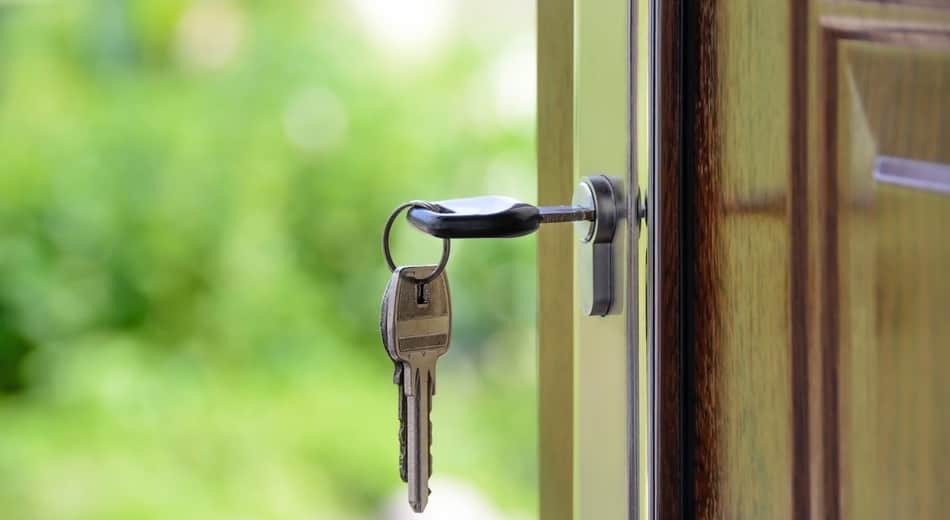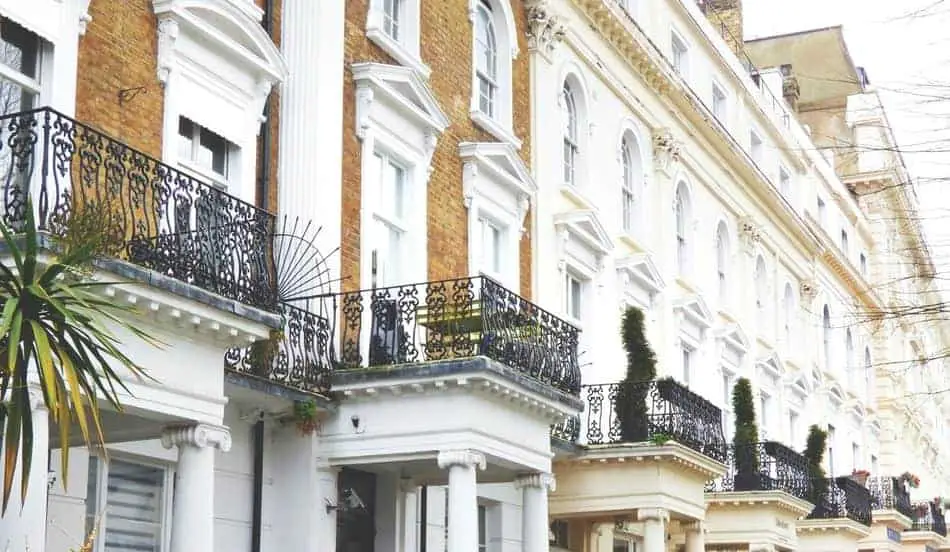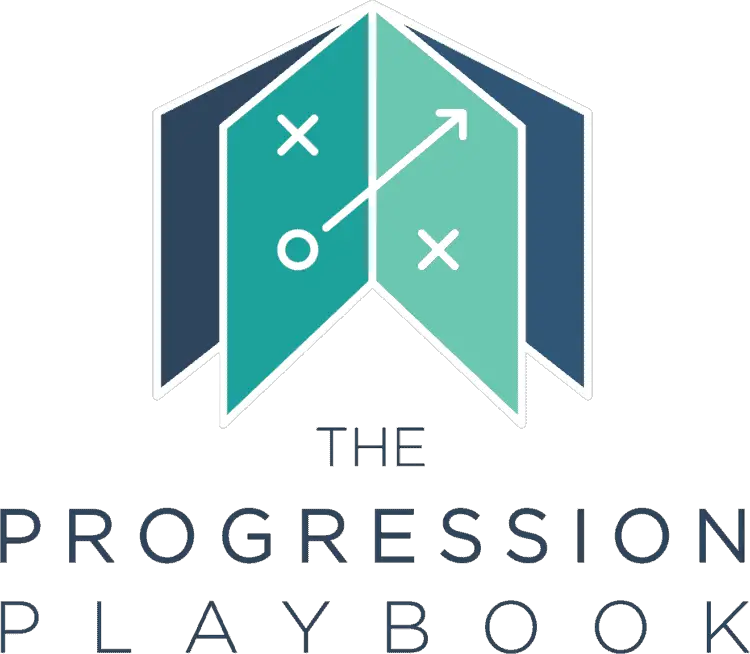Shared ownership is probably a term you’ve heard a lot about recently, particularly if you’re looking to own your own home. What’s less clear is the details of how exactly this scheme works, how you qualify and what the risks are.
You can not be evicted from a shared ownership scheme property that you partially own in the same way a landlord can evict a tenant. However, the housing association may be able to get a possession order through the courts to compel you to sell your share of the property if you can’t pay your rent.
Purchasing a home is one of the big financial decisions which will shape many people’s financial futures. Here at The Progression Playbook one of the core pillars of becoming financially independent is avoiding financial mistakes. Let’s take a look at whether shared ownership has the potential to fall into this category or whether it’s an ideal stepping stone onto the property ladder.
Can you be evicted from a shared ownership scheme property?
An individual who owns a share of a shared ownership scheme property can not be evicted in the same way a tenant can be evicted by a landlord for not paying rent. However, the housing association could force you to sell your share if they get a possession order through the courts.
A renter could be evicted by their landlord in situations where they fail to pay their rent, damage the property or even have noise complaints made against them depending on the terms of the rental agreements.
As described below, shared ownership scheme users own a share of a property and pay rent on the portion they don’t own to a housing association. Due to the partial ownership, shared ownership scheme users are protected from the threat of eviction.
However, in serious cases, like the inability to pay rent over time, the housing association may choose to pursue legal recourse by obtaining a possession order which may compel the shared ownership scheme user to sell their share of the property in order to pay the outstanding rent.
This process is not dissimilar to if a homeowner began to default on their mortgage. The property asset is collateral which means it would need to be sold in order to repay the outstanding debt.
How to qualify for the shared ownership scheme
Whilst the shared ownership scheme can be hugely advantageous – there are some strict conditions that need to be met in order to qualify.
- Age – You must be aged 18 or older.
- Citizenship – You must be a British, EU or EEA citizen or have ‘indefinite leave to remain’ in the UK.
- Employment – You must have a permanent contract of employment (not within a probationary period).
- Household income – Your annual household income must be less than £80,000 (£90,000 in London).
- Number of properties – You can only personally own one property at a time.
- Applicability – You must be a first-time buyer, existing shared owner or used to own a home but can’t afford one at present.
Whilst most of these conditions are attainable, the household income limit of £80,000 per annum (£90,000 pa in London) can pose a problem for couples who each achieve a high income. Ideally, potential buyers would earn just under this amount and hit the sweet spot – under the upper salary limit but earning enough to cover mortgage costs comfortably.
It’s also worth noting that military personnel get preference for shared ownership properties so this may be a particularly attractive option for ex-armed forces personnel.
How does the shared ownership scheme work?
The shared ownership scheme is a government-endorsed programme that helps people purchase a home who otherwise may not be able to. Sometimes referred to as ‘part-buy, part-rent’, a shared ownership property is partially owned with the option of increasing your ownership over time. On the portion you don’t own, rent is charged by the housing association.
The shared ownership scheme allows you to buy an initial stake of between 10% and 75% of the total property value.
As an example, if a potential buyer purchased a 50% stake in a property, the remaining 50% would be owned by a housing association which is essentially a not-for-profit company offering housing solutions.
Carrying on with this example, let’s say you are purchasing 50% of a £300,000 property so a £150,000 stake. Typically, you would need to put down a 5% deposit on your share so £7,500 (£150,000 * 5%).
When compared with typical deposits, clearly this is very low and highly attractive to potential buyers.
The remaining value of a buyer’s initial stake in this example is £142,500 (£150,000 – £7,500 deposit) which will have to be funded by a mortgage or personal savings.
On the remaining share of the property (i.e. the part you don’t own), the housing association will typically charge rent at 2.5-3% per year. So on the £150,000 share, rent at 3% would be £4,500 per year or £375 per month payable to the housing association.
£375 per month on a £300,000 value property may sound low, but don’t forget you will have to pay mortgage payments on top of this as agreed with the mortgage lender on the share you own.
How does ‘staircasing’ work on the shared ownership scheme?
In our example above, we bought an initial 50% stake in the property. Many shared owners have the goal of ultimately owning the property outright, i.e. 100% of the property.
Buying this whole additional 50% in one go can be a tall order for many people, so the common solution is ‘staircasing’ which basically means increasing your ownership gradually over time.
As of 2020, the minimum staircasing increment has been reduced to 1% which means it would be possible to increase our ownership from 50% to 51% if we wanted to. However, this may not be the smartest plan given the administrative burden and expense of staircasing – so most people tend to increase their ownership in bigger blocks e.g. 10% or 25% at a time.
Let’s say we wish to increase our ownership percentage from 50% to 75% after a couple of years – what are the steps?
The first thing is to arrange with the housing association for a new valuation of the property to be carried out to work out how much it will cost to buy our new stake of 25%. Once this has been done – the shared owner will need to make sure they have the cash in place to afford this new share (whether that be through savings or through mortgage financing).
The key point when it comes to staircasing is being strategic from the start. Many housing associations limit the number of times you can staircase and each time the legal and valuation costs can make staircasing pretty expensive so staircasing in small increments is often not cost-effective.
Other information to consider on the shared ownership scheme
It’s worth understanding in advance a few of the specific details of shared ownership including how you are unable to sub-let, you are responsible for 100% of the properties utility bills and repair costs despite not owning 100% of the home and there may be a service charge to pay.
Selling your stake of a shared ownership property can be problematic which means this scheme shouldn’t be entered into on a whim. Rather, potential shared owners should map out a full plan in terms of initial stake, staircasing and an exit plan.

What are the pro’s of buying a property using the shared ownership scheme?
The shared ownership scheme was introduced in the 1970s with the primary aim of helping those who are unable to afford to purchase a property the chance to own a home. With this in mind, there are a number of clear advantages of this scheme which I’ve laid out below.
The big advantage of shared ownership is that it makes purchasing a home affordable. As this scheme enables you to buy a smaller proportion of the overall property, the amount of deposit you have to put down will be much smaller.
A big hurdle for many first time buyers is the availability of an affordable mortgage. On a shared ownership scheme property, as the value of the proportion of the property is lower, potential buyers will likely find it much easier to access a mortgage for this amount.
Whilst it’s true that shared owners will have to continue to pay rent on the proportion of the property they don’t own, these rental payments are typically a lot lower than renting privately which makes homeownership more affordable for many potential buyers.
Unlike renting privately, shared owners retain the rights usually associated with ownership. For example, a shared owner would be perfectly within their rights to re-decorate which a private renter may not be able to. For those people who are looking to personalise their living space, this scheme may offer the ideal scenario.
What are the con’s of buying a property using the shared ownership scheme?
Whilst the advantages of shared ownership are clear, it would be remiss of me not to point out a few of the downsides. Whilst these factors should by no means be a deal-breaker, they definitely need to be considered.
The biggest disadvantage to this scheme is the difficulty shared owners can face ‘staircasing’ and ultimately selling the property (or their share of the property).
As explained above, under the shared ownership scheme, people typically buy a small initial share before ‘staircasing’ their level of ownership up over time. The issue with this is that staircasing doesn’t come cheap. Each time, the property will need to be revalued which entails surveying, legal and mortgage fees each time.
Unlike a non-shared ownership property, when it comes to selling the property, the housing association will typically have the first refusal which can complicate matters. If the housing association is unable to find a new buyer within a reasonable timeframe, the shared owner can move on to selling the property on the open market.
The second con is that under this scheme, you are still technically a tenant which means you continue to pay rent to your landlord (or housing association) on the proportion of the property you don’t own. This brings some obvious problems including the risk of eviction (which in some situations mean you could lose out on the part of the property you have bought) and continuing to have to pay a service charge to cover maintenance costs.
Shared-ownership homeowners are unable to sub-let which is another example of the reduced flexibility of purchasing a home under this scheme as opposed to buying a property outright.

Recent changes to the shared ownership scheme
On the 8th of September 2020, the government announced a few notable changes to the shared ownership scheme.
The first big change is the minimum initial ownership share being reduced from 25% of the total property value to 10% which should make home-buying more affordable for first-time buyers. However, many mortgage lenders still require the full 25% which reduces the impact of this change in reality.
Staircasing, explained above, was previously only possible in increments of 10%. The new guidance suggests that ownership can be staircased in 1% increments. However, it is worth noting here that the hurdles of staircasing explained above still apply and may not be cost-effective for these small, incremental increases.
The updated shared ownership scheme includes a 10-year initial period whereby the housing association will cover the cost of any repairs and maintenance in the home. This is a positive change for shared-owners as it will help reduce monthly expenses.
The help-to-buy scheme
The help-to-buy scheme is an alternative government scheme to assist people in purchasing their first home. Unlike the shared ownership scheme, users of this scheme will own 100% of the property but maintain the benefit of a low initial deposit.
The help-to-buy scheme involves paying just a 5% deposit (e.g. £30,000 on a £600,000 property) and the government provides qualifying home-buyers with an equity loan to go toward the total value of the property.
This scheme is limited to new properties under £600,000 in total value. In the UK, the government will lend 20% (40% in London) of the home purchase price interest-free for the first 5 years. This would give the following picture:
| London | Rest-of-UK | |
| Purchase Price | £600,000 | £600,000 |
| Deposit (5%) | £30,000 | £30,000 |
| Equity loan (40%/20%) | £240,000 | £120,000 |
| Remaining balance to fund | £330,000 | £450,000 |
To qualify for this scheme, the following criteria need to be met:
a) Can’t use the scheme for a second home or rental property.
b) The property must be under £600,000 in total value.
c) You will require at least a 5% deposit to be paid.
d) You must use a repayment mortgage for at least 25% of the property value (i.e. £150,000 on a £600,000 property)
The main advantages of this scheme are the fact you can purchase a property with a very low initial deposit. On a relatively cheap property e.g. 250k, you would only have to put down £12,500.
The interest-free equity loan is also a huge positive as it gives home-buyers a much cheaper cost of debt than a traditional mortgage.
However, this benefit comes at a cost. When it comes to selling the home, the repayment of the equity loan is on the value of the home on the sale date, not at the cost it was purchased for.
For example, if you purchased a home for £400,000 in London and took a 40% equity loan from the government (£160,000) – if, when it came to selling up, your home was valued at £500,000, you would pay back 40% of that figure (£200,000) meaning you would pay back £40,000 more than you borrowed.
If you plan to buy and sell a house within a short period of time and expect the house to increase in value at that time, this scheme may not be the optimal choice. It should be noted, the example above is unrealistic and even paying back on a moderately higher valued property may be cheaper than the interest costs on a typical mortgage.
Conclusion
Getting the details of a big financial decision like buying a house right is crucial when it comes to meeting your overall financial goals. Making a mistake by buying a property you can’t really afford or signing up for a scheme that you don’t fully understand may prove to be the difference between you becoming financially independent at your target age or not.
There are a number of criteria potential shared owners need to meet in order to apply – the most notable of which is the combined house income limits – £80,000 per annum or £90,000 if in London. These criteria would rule out many high-earning professional couples, particularly in London.
The main advantage to shared ownership is simply that it makes purchasing a home more affordable, particularly for first-time buyers. Large deposits can be a significant barrier to entry for many people and this scheme goes some way to remove this hurdle.
The big downsides to shared ownership are the difficulties associated with staircasing and ultimately selling the property. Whilst these aren’t necessarily terminal problems, they should be properly thought through prior to committing to this scheme.
Whether you choose to use the shared ownership or help-to-buy scheme to fund your home purchase, make sure you understand all the small details and map the financial impact into your wider life goals and you can’t go too far wrong.
As always, please remember I am an Accountant, but not your Accountant. In this post (and all of my others) I share information and oftentimes give anecdotes about what has worked well for me. However, I do not know your personal financial situation and so do not offer individual financial advice. If you are unsure of a particular financial subject, please hire a qualified financial advisor to guide you.
This article has been written by Luke Girling, ACA – a qualified Accountant and personal finance enthusiast in the UK. Please visit my ‘About‘ page for more information. To verify my ACA credentials – please search for my name at the ICAEW member finder. To get in touch with questions or ideas for future posts, please comment below or contact me here.

Hi Luke
I read the article regarding shared ownership rights with regards to evictions etc.
I had a shared owner flat and due to marital breakdown unable to go back to the property since 2019. I contacted the RSL for assistance in housing and they told me they could not assist further or take the rent from my partner who was still living in the flat. I stopped paying rent there as I was no longer living there. They seeked a possession order in 2022 without trying to resolve the matter with me and was granted this by court. Only now has the flat become vacant and I have asked if I could return. They said that I have no rights and that they have taken possession and I feel upset as I lost a home as well as my share of the flat which I paid off. They have not forced me to sell like your article indicates. Such schemes seem to be a rip off and a scandal.
Thanks for your comment Mr A – I’ve put your comment as visible to other readers so they are aware of the pitfalls of shared ownership & I’m sorry to hear of your situation, that sounds very tough to accept.